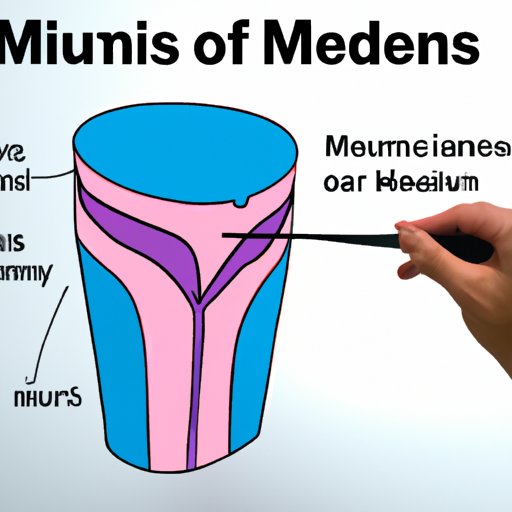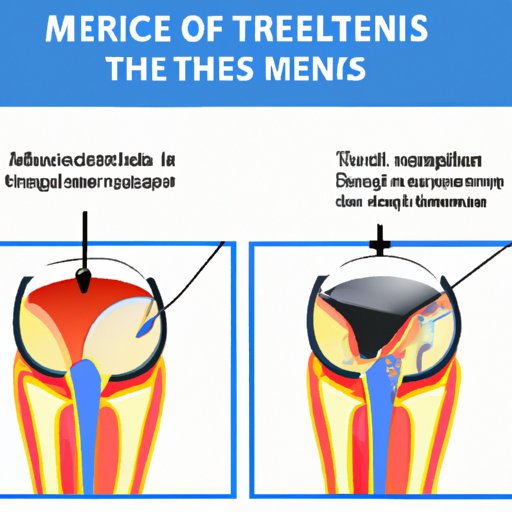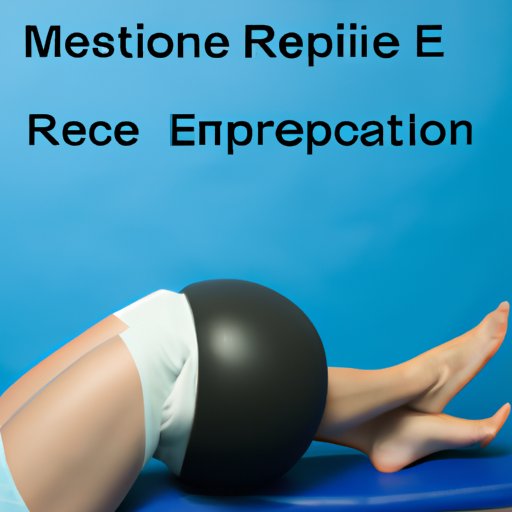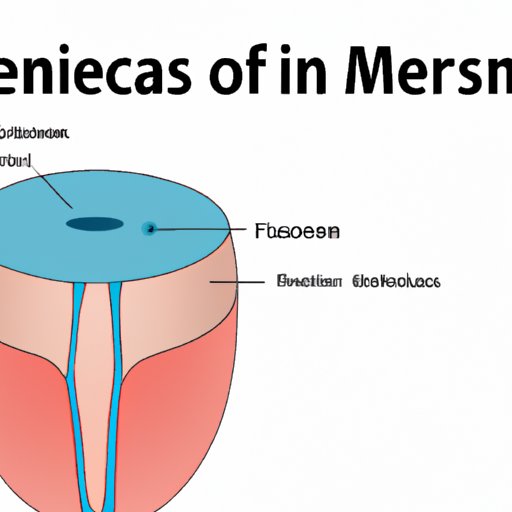Introduction
A meniscus is a cartilage-like structure found in the knee joint that acts as a cushion between the thigh bone (femur) and shin bone (tibia). It helps to absorb shock, protect the joint from wear and tear, and stabilize it while walking, running or jumping. Injuries to the meniscus are common, especially among athletes who participate in contact sports such as football, basketball, and soccer.

Explaining the Anatomy and Function of a Meniscus
The meniscus is made up of two crescent-shaped pieces of cartilage – one on the inside (medial) and one on the outside (lateral) of the knee. Each piece is attached to the tibia at its ends and is held in place by strong ligaments. The menisci act as shock absorbers, helping to reduce the impact of activities such as walking, running and jumping. They also provide stability to the knee joint by helping to keep the femur and tibia aligned. This helps to prevent the bones from rubbing against each other, which can cause pain and damage to the joint.
Why Injuries to the Meniscus are Common
Meniscus injuries are common because the knee joint is under constant stress when we walk, run or jump. Over time, this can cause the meniscus to tear or become damaged. Other causes of meniscus injuries include twisting or turning the knee too quickly, direct blows to the knee, or simply aging. Certain factors can increase the risk of meniscus injuries, including muscle weakness, poor flexibility, lack of balance, and tightness in the muscles or ligaments around the knee.

How Meniscus Tears are Diagnosed and Treated
In order to diagnose a meniscus tear, your doctor will likely perform a physical exam, during which they will check for swelling and tenderness in the knee. Imaging tests such as an X-ray or MRI may also be used to confirm the diagnosis. Treatment for a meniscus tear typically includes rest, ice and anti-inflammatory medications. Depending on the severity of the injury, surgery may be needed to repair the tear.

The Role of Physical Therapy in Recovering from a Meniscus Injury
Physical therapy plays an important role in recovering from a meniscus injury. A physical therapist will work with you to develop a personalized rehabilitation program that focuses on strengthening and stabilizing the knee joint. Exercises such as squats and lunges can help to strengthen the muscles around the knee and improve range of motion. Your physical therapist can also help to restore coordination and proprioception, which is the ability to sense where your body is in space and adjust accordingly.
Investigating the Latest Research on Meniscus Science
Researchers are currently investigating new treatments for meniscus injuries, including stem cell therapy and regenerative medicine. One study published in the journal Stem Cells Translational Medicine found that injecting stem cells into the knee joint could reduce inflammation and promote healing of the meniscus. Another study published in the journal Arthroscopy Techniques found that using platelet-rich plasma (PRP) injections could help to promote tissue regeneration and reduce pain associated with meniscus tears.
Examining the Benefits of Surgery for Meniscus Repair
Surgery is sometimes necessary to repair a meniscus tear. Depending on the type of tear, your surgeon may use sutures or stitches to reattach the torn pieces of cartilage, or they may remove a portion of the meniscus. After the surgery, you will likely need to follow a rehabilitation program to help you regain strength and mobility in your knee. Recovery times vary based on the type of surgery, but most people are able to return to normal activity within four to six weeks.
Conclusion
Meniscus science is a rapidly evolving field of research that is uncovering new ways to diagnose and treat meniscus injuries. From understanding the anatomy and function of the meniscus to exploring potential new treatments, researchers are working hard to find solutions to help those suffering from meniscus injuries. If you experience any symptoms of a meniscus tear, it’s important to seek medical attention right away. With proper treatment and rehabilitation, you can make a full recovery.
(Note: Is this article not meeting your expectations? Do you have knowledge or insights to share? Unlock new opportunities and expand your reach by joining our authors team. Click Registration to join us and share your expertise with our readers.)
